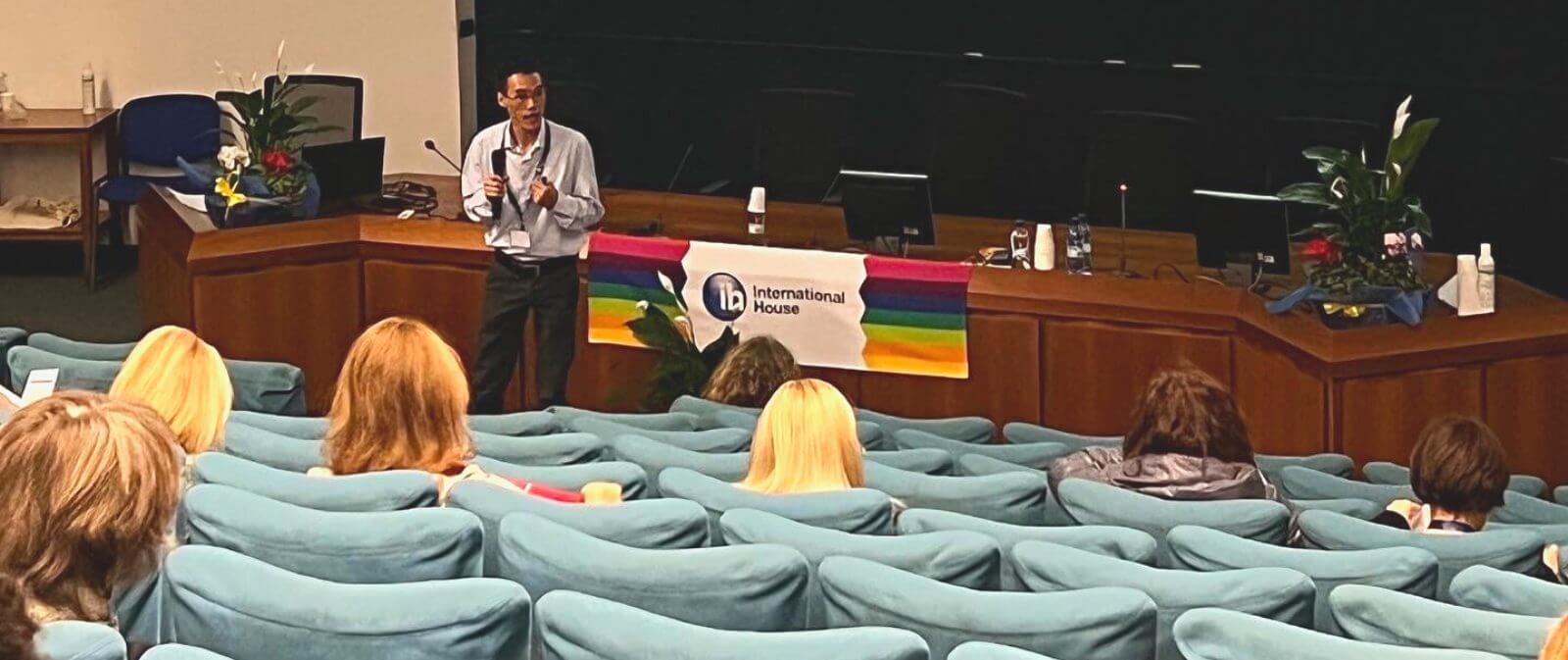As a self-contained topic, synchronous and asynchronous learning comprises a broad range of methodological areas. To address some of these in my talk, I decided to approach the topic by sharing personal reflections on my journey of teaching and learning. More precisely, I analysed my decision-making process of choosing lesson activities for both modes of learning. My guiding principle is that every decision I make will lend itself to maximising learning opportunities in the classroom. After establishing this background context for the audience, I proceeded to summarise my reflections in five principles.
Principle 1: ‘Do it on your own’ or ‘do it together’
Can students complete an activity individually? Do they need to cooperate with each other in order to achieve a certain outcome? In theory, if teachers shift any ‘do-it-on-your-own’ activity to the asynchronous space, they will be able to provide students with more communicative practice in lessons. To this end, I illustrated the first principle with a coursebook unit on the present perfect simple and the past simple. Rather than use the Reading task and the gap-fill of this unit for synchronous learning, teachers can consider moving such ‘do-it-on-your-own’ tasks to the asynchronous space. This is akin to adopting the flipped classroom method.
I would, however, argue that there are flaws in this over-simplified principle. With the increasingly popular use of technology in education, some teachers have used ‘do-it-together’ tasks in the asynchronous space with great success. More importantly, given that most receptive skills tasks can be done individually, students might never have any opportunity of learning Listening or Reading skills in the classroom. This brings us to the next principle.

Principle 2: Teaching or testing aims
Reconsidering the previous Reading task, it is evident that the target grammar, not skills development, constitutes its aim. In choosing between synchronous and asynchronous learning, teachers, therefore, need to identify their purpose of using any receptive skills task. Are they teaching or testing their students?
I illustrated this principle with a Reading Part 4 task of the Cambridge Preliminary for Schools exam, which focuses on the sub-skill of identifying references. If it is the first time students encounter this task type, teachers should keep it in the synchronous space. In fact, students need to be taught how to properly deploy the above target sub-skill. Once they can complete this Reading task autonomously, teachers can consider moving any further Part 4 exam practice outside lessons as homework.
Principle 3: Cognitive processing and order of thinking
Given that there is a positive correlation between cognitive processing and time, teachers can use the level of cognitive demand of an activity to make decisions about either mode of learning. With the aid of the revised Bloom’s taxonomy, I demonstrated how teachers can exploit a reflection task for Speaking Part 3 of Cambridge First for Schools exam. In this two-part task, students reflect on certain targeted aspects of the candidates’ performance as they watch a sample video of the Speaking exam.
According to the revised Bloom’s taxonomy, a ‘reflect’ task type represents the second highest order of thinking. In other words, this reflection task demands a high level of student cognitive processing as well as a considerable amount of time for them to complete. Teachers may therefore wish to use both parts of the task for asynchronous learning so that they can spare lesson time for Speaking exam practice instead. Alternatively, students can watch the video once and do the shorter first part synchronously, but they complete the longer second part outside the classroom.
Regardless of how this reflection task is used, teachers will be better able to make educated guesses about timings if they are aware of the cognitive demands of lesson activities. It is this kind of awareness which would help teachers to choose between synchronous and asynchronous learning.
Principle 4: Learning contexts
Although teachers can maximise communicative practice in lessons by shifting all ‘do-it-on-your-own’ activities to the asynchronous space, they should be aware of their students’ circumstances. If every teacher did exactly as it was suggested above, some students would find it extremely challenging to manage the sheer amount of asynchronous learning at home.
After confessing to the audience that I used to forget my homework and almost fail my maths exams, I highlighted the need for teachers to consider a range of factors when making decisions about lesson activities. Such factors include students’ motivation, learning needs, preference for learning styles, and available time for learning outside lessons.
Furthermore, as a German learner, I often appreciate having individual time for absorbing and reorganising new information in any lesson. By arguing that teachers should leave some ‘do-it-on-your-own’ tasks in the synchronous space, I, therefore, contradicted my first principle with this qualification. Nevertheless, this kind of dilemma only exemplifies the constant interaction between different principles in the teacher’s decision-making process. In fact, there is no single principle alone which can give us a satisfactory answer.
Principle 5: Eclectic approach
Having mentioned the holistic nature of all four previous principles, I concluded my talk with the final one: an eclectic approach. In order to maximise learning opportunities in the classroom, teachers need to be eclectic in their choice of lesson activities for both synchronous and asynchronous learning.

Daniel Tse went into ELT in 2019 and started teaching at IH Milan and San Donato in the same year. He works with Young Learners, teens and adults across the full range of CEFR language levels. As a language teacher, he lays great emphasis on developing learners’ autonomy and communicative competence. Prior to ELT, Daniel trained as a classical musician and delivered outreach workshops for a number of major performing arts organisations in the UK.

